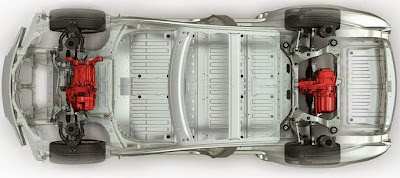Venkat Viswanathan, assistant professor of mechanical engineering at Carnegie Mellon University, is developing a search engine that will help researchers and industry experts discover and develop electrolytes for batteries more quickly and efficiently than currently possible.
Viswanathan, who is researching new types of lithium batteries for electric vehicles, realized how slow and inefficient it is to search for specific information on the different components. "You have to go read through multiple charts or go through handbooks to get to that information, and then try to discover something that will actually work," Viswanathan says.
Viswanathan was inspired to find a solution to this problem by President Barack Obama's first announcement of the Materials Genome Initiative. Making the announcement at Carnegie Mellon in 2011, he called upon scientists and engineers to help discover and produce new materials faster and in more cost-effective ways by creating and using a massive database of information on industry materials.
While the Materials Genome Initiative is intended for a broad spectrum of industry applications, Viswanathan is currently focused on developing a data genome for electrolytes. Electrolytes consist of salt and a solvent, and are essential in lithium ion batteries because they serve as the channel that moves the lithium ions, which store the energy. Charged ions must be moved from one side of the battery, and when they are charged, back to the other side, where they can be consumed. Finding electrolytes that work is currently one of the major barriers to developing more energy-dense storage solutions for consumer use.
Using a search engine similar to social networking sites Facebook and Yelp, scientists and researchers can use the electrolyte genome to enter the beginning of queries and receive suggestions about what they might mean, similarly to how when you type "Sara" into your Facebook search, the people named Sara who are your friends are the top suggestions. It also can handle queries with "and," such as if you type in "Sara" AND "Boston" to discover Saras who live in Boston. While this sounds common for everyday users, it is novel for very technical organic chemistry searches.
The search engine is robust enough to help users come up with ideas, such as if a researcher is trying to think of a certain set of desired attributes for a solvent but cannot quite precisely state it — like how you might be trying to think of a word on the tip of your tongue, but can only remember it starts with a certain letter and means something similar to another word.
In the future, users will be able to seamlessly merge data graphically to get more complex information such as correlations between various properties of solvents or between different solvents. This is similar to the search engine Wolfram Alpha, which, should a user type in "GDP of China and India," will provide the users not only with the countries' current GDPs but also with a graph detailing how their GDPs have increased over time, among other relevant facts.
The ability to access this in-depth level of information would result in faster and more successful testing of new materials, ultimately allowing researchers and businesses to get products from concept to marketplace more quickly.
Viswanathan's electrolyte genome project is tailored for expert users who are looking for complex information, such as electrochemical and chemical properties, and highest occupied molecule orbital (HOMO) level of solvents, but he hopes to eventually expand the project to be accessible to the general public and to other kind of solvents beyond organic solvents. The data genome search engine would support a wide range of querying options, from complicated searches by experts to simple searches by general users who are looking for information unavailable outside of print materials or who just want to see the capability of the data genome.
To test Viswanathan's electrolyte genome project, visit: http://www.andrew.cmu.edu/user/venkatv/SEED.html.


